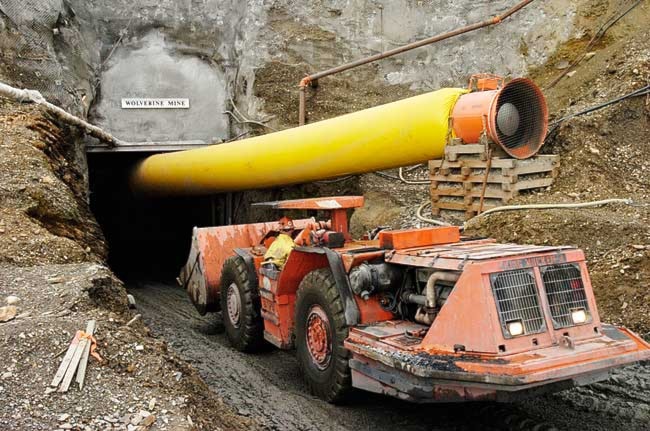The mining industry employs 600 Yukoners.
But no one knows how many people, in total, the sector employs here. It’s a mystery.
Albertans working in the territory are counted in the provincial stats, not the territory’s.
The Yukon bureau of statistics was working to find a fix with Statistics Canada, to pin down the size of the mining sector here.
But that effort was abandoned in March, said Garry Brown, the bureau’s senior information officer.
So we don’t know if Yukoners make up half, most or barely any of the Yukon mining sector’s workforce.
What we do know is miners make up three per cent of the total workforce.
And of that figure, the Yukon Mine Training Association trains two thirds.
Since the association secured its core funding from Ottawa in 2008, it has trained 850 people. Of those, 460 found jobs in the industry, said Jennifer Russell training manager with the association.
The Yukon Mine Training Association gets about $5 million a year.
That’s $20 million since 2008.
Ottawa and the territory cover half that cost.
The other $10 million is split between First Nations, industry and educational institutions, like Yukon College, said Russell.
Since April, the college’s School of Mining and Technology has had to double the number of programs available to train exploration field assistants and they’ve offered three rounds of the camp maintenance manager course.
These programs - which are partnerships with the Yukon Mine Training Association - only run for 14 days and end with a three-week placement within the industry.
By Sunday, there will be 32 new field assistants and 24 new camp managers trained and ready for industry.
The timing is definitely right, said Janet Lee-Sheriff, vice-president of First Nations relations with Golden Predator Corporation, an exploration and development company.
Many companies have been staking all winter, and that trend will become more common, she said.
“There’s a huge need for a lot of this training,” she said. “A lot of these skills are in demand and there’s a lot of good people in the community. So it’s a good opportunity for people to take these jobs but to also grow into careers as the projects advance as well.”
Lee-Sheriff helped establish the Yukon Mine Training Association.
It was an idea that developed within the framework of Yukon First Nations’ land claims, final agreements and impact-benefit agreements that detail quotas industry must meet when developing, or working on First Nation traditional territory.
“It’s not the easy thing to do, she said. “It’s easy to write a cheque and just walk away. Putting the time in to create the sustainability of it is hard, but it’s also the only way, we feel, that we can all move forward together.”
“There’s got to be an attitude shift to make sure we share the wealth. We’ve (Golden Predator) made a real effort to create a ‘Yukon company.’ Our belief is that you have to bring the community along with you. If we do it right, and we create the infrastructure, we create the businesses and we create the sustainability around the mining sector, it leads to the development of a broader economy.”
And it’s the same sort of idea for the training people receive through programs like those offered by the Yukon Mine Training Association, said Lee-Sheriff.
“All training is valuable,” she said. “It gives you life skills you need to go and figure out what you want to be next in your life.”
Contact Roxanne Stasyszyn at
roxannes@yukon-news.com
